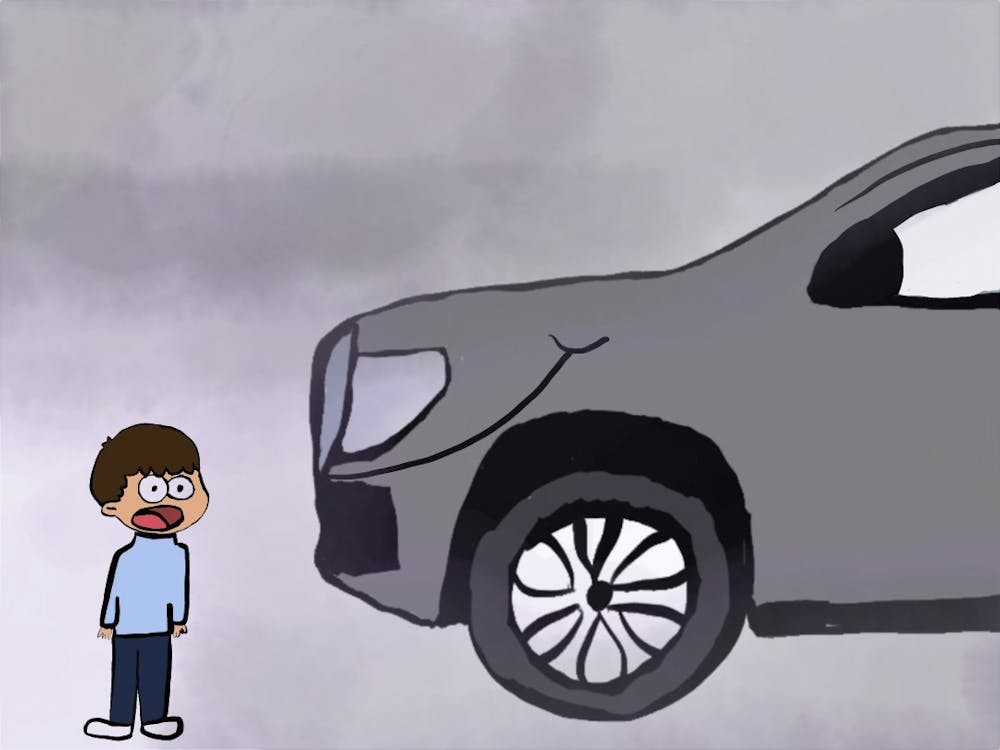Since I got my license in 2021, I’ve driven my lovely 2015 Prius Compact. I love it because it’s fuel-efficient, cheap and, most importantly, small. I can squeeze into small parking spaces and questionable Bloomington one-way streets without a care in the world. (This article is not sponsored by Toyota.)
However, over the years, I’ve felt increasingly boxed in. The cars around me on the highway are towering SUVs and pickup trucks which often stretch to twice the length and height of my pint-sized Prius. Driving around these cars, I feel like I could be flattened at any moment.
This isn’t just a feeling. The width of the average car is growing at a rate of nearly half an inch every two years. The average vehicle in 2022 is around 1,000 pounds heavier than the average vehicle in 1980.
Some of these size increases are for good reason — such as airbags and crumple zones, which dissipate energy during a crash into the car instead of into the passengers. These safety features associated with size are fantastic, and I would never want them to be taken away from any vehicle.
Though, there are drawbacks to this massive scale. As car size increases, so do blindspots, which can lead to dangerous crashes. One particular type of accident is more common with large vehicles: frontovers.
A frontover accident occurs when a driver is unable to see a person in front of their vehicle. Children are especially susceptible to these accidents since they are less visible over the hood. Over 500 people died from frontover accidents in 2020, and 75% of frontovers involve a larger vehicle, such as a van, truck or SUV.
For example, one demonstration with a truck over four feet tall found that child-sized dolls were only visible 21 feet in front of the driver’s seat. Another demonstration found that, in some vehicles, 11 children could sit in front of the hood before a five-foot-two driver could see them.
In addition to this, pedestrian deaths in vehicle crashes have increased 83% since 2009. Over 1,000 bicyclists were killed in vehicle crashes in 2022, the highest number ever recorded. And from 2000 to 2018, the average front hood of a pickup truck grew by 11%. It’s probably no coincidence that vehicle growth and increasing pedestrian deaths go together so fittingly.
Between 2018 and 2022, the number of deadly car crashes increased by over 16%. Meanwhile, every category of midsize or larger SUVs and pickup trucks grew more than 20% in market share between 2012 and 2021. The bigger our cars get, the more dangerous they get to the world around them. I don’t think myself or my Prius would be doing very well if we had a run-in with an F-150.
I find it hard to justify sacrificing pedestrians, bikers and children just to drive around lifted trucks and eight-seater minivans. No one’s wish to have the biggest car on the interstate should overwrite the right for pedestrians and bikers to exist safely.
Though many car manufacturers have installed backup cameras and blindspot monitors to reduce these risks, there still is little regulatory action in controlling the main issue — the sheer size of these vehicles. Something needs to shift when we need more and more technology just to prevent us from bowling over children in our massive vehicles. More lawmakers need to push for regulations on the size and blindspots of the vehicles on our roads.
I understand the purpose and need for SUVs and pickup trucks. Sure, they’re convenient and useful. But when our convenience overpowers the safety of others, it’s time for things to change.
Danny William (they/them) is a junior studying cinematic arts.






